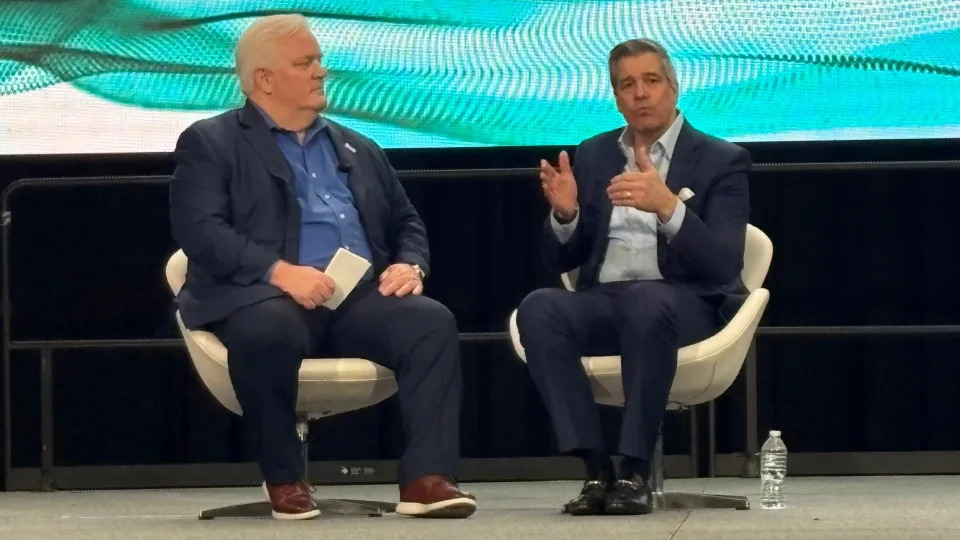Alliance, NADA CEOs: California’s EV rules will disrupt market

DETROIT — New rules requiring 35 percent of auto sales in California and several other states to be zero-emission vehicles starting with the 2026 model year will disrupt the market before consumers are ready for mass adoption, the leaders of groups representing automakers and dealers said.
John Bozzella, who leads the Alliance for Automotive Innovation, a trade group representing major automakers in the U.S., said there’s “not a chance” the states that follow California’s Advanced Clean Cars II regulations will achieve that benchmark this year, when the first 2026 models will go on sale, based on current electric vehicle adoption rates.
“It’s going to create higher prices. It’s going to send New Yorkers to Pennsylvania to buy new vehicles. That’s the true mandate,” Bozzella said Jan. 15 during remarks at the Detroit Auto Show. “The Biden administration just gave California a permission slip to put this program in place. These other states are following it. I think we’ve got to fix that.”
Sign up for Automotive News breaking news alerts and be the first to know when big news happens.
Mike Stanton, CEO of the National Automobile Dealers Association, told Automotive News at the auto show that finding a workable solution is a high priority because of how quickly the 2026 model year is approaching.
”NADA has been steadfast in our commitment that we think that the mandates are going too far, too fast. We’ve been advocates for one national standard,” Stanton said during a panel discussion. “We see a train wreck that’s coming — a train wreck that’s not going to be good for our industry.”
Bozzella and Stanton spoke five days before President-elect Donald Trump takes office. Trump’s transition team has signaled interest in relaxing federal emissions rules and revoking California’s ability to set its own standards.
California’s Advanced Clean Cars II regulations have been adopted by 11 other states and Washington, D.C., phasing in with the 2026 and 2027 model years. The standards require an increasing share of electric, plug-in hybrid and fuel-cell vehicles to be sold each year until reaching 100 percent in 2035.
Automakers and dealers have expressed concerns that the requirements ramp up too quickly and will lead to fewer vehicle options in states following the California standards.
The alliance said Jan. 15 that EVs accounted for 26.8 percent of new registrations in California in the third quarter of 2024, the most of any state. Only 14 states had EV registrations above 10 percent in the quarter, the group said.
“I do think that the state requirements are completely out of sync with where the customer is in states where the program is operating — for example, in New York,“ Bozzella told reporters. ”And so I do think that there needs to be a conversation about whether those mandates are sustainable in the current market and are also fully cognizant of the competitive risks we face around the world.”
Priorities for Trump administration
Federal tax credits on EV purchases and leases have helped move vehicles, Stanton said. If the Trump administration eliminates some components of the $7,500 credits, EV sales likely will fall, he said, and it will be important for a wind-down period so dealers and automakers can plan.
“We’d like to see a reasonable ramp-down, in terms of let the manufacturers adjust, let dealers work out of this inventory that we have,” Stanton said. “To just pull the plug would leave dealers in a very, very tough situation.”
Bozzella said the auto industry needs to move more urgently to improve its competitiveness globally, particularly as the U.S. enacts tariffs and takes other steps aimed at keeping Chinese connected-vehicle software and hardware out of the U.S.
“Those products will get here at some point,” he said. “What are we as an industry going to do with the time that that affords us? And that is all about retaining our competitive edge, enhancing our competitive edge where we may not have a lead, and really, really focusing on being globally competitive.”

